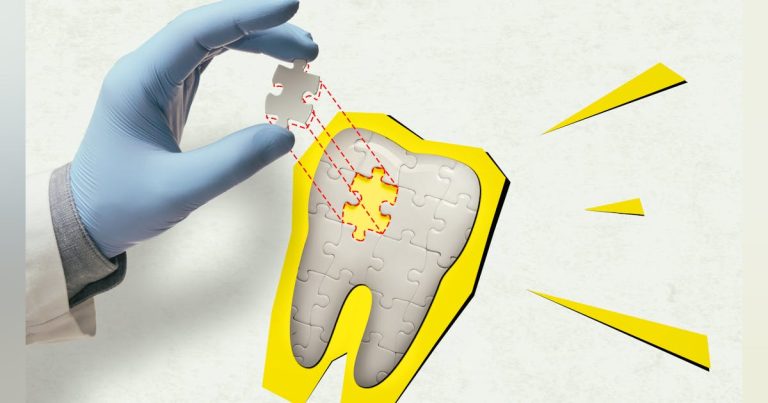Hippocrates made a significant contribution to modern medicine by stating that medicine should be based on detailed observation, logic and experience for diagnosis, prognosis and treatment. I believe we should treat our patients’ preventive oral health recommendations the same way, focusing on the root cause of the problem — not just treating the symptom. We should focus on identifying the factors that cause the oral cavity to be in dysbiosis and work to create a symbiotic relationship. Three practical applications can help implement a root cause approach to chairside preventive care.
Red cluster of bacteria
There are three red group bacteria in the mouth-Porphyromonas gingivalis, Treponema denticolaand Tannerella forsythia1—which are considered a root cause of periodontal disease. The level of destruction depends on the host’s response to the bacteria, the patient’s diet and home care. The systemic burden determines how quickly these bacteria can reproduce and wreak havoc. A. actinomycetemcomitans and P. gingivalis they can transfer the highly infectious agents to other bacteria in the mouth. P. gingivalis can cause dysbiotic gut microflora to reproduce gut pathology. Scaling and root planing alone will not eliminate the entire load of red complex bacteria.2
You may also be interested in… Dental abscesses and their systemic effects
Once we identify the type of red complex bacteria, we can recommend adjunctive treatments to eliminate or reduce pathogenic loads. For example, xylitol can be used to kill P. gingivalis.3 Multiple tests can identify the bacteria of the red complex. I use antibiotics as a last resort, so it is advantageous to choose a test that provides sensitive readings. Tests range from counting the red cluster to a thousand counts to 10 counts of bacteria.
pH test
The critical pH of the mouth is 5.5 in enamel and 4.5 in cementum. Many sugar-free drinks are below the critical pH, including bottled water. In a healthy mouth, saliva can adjust this pH to a more alkaline level. However, when the patient experiences even mild levels of dry mouth, this ability is compromised.
For the past decade, we have trained our patients to avoid sugary drinks. Despite being sugar-free, many drinks (such as seltzer water) have a pH as acidic as orange juice. Limiting the frequency, duration and consumption of acidic drinks will reduce the incidence of dysbiosis. In addition, patients with gram-negative bacteria tend to have a more acidic initial pH.4
You may also be interested in… Using evidence-based science to advance periodontal therapy
Applying a chair pH test can be as simple as using an oral pH strip before preventive hygiene treatment. Instruct the patient not to eat or drink for one hour prior to the appointment to determine their oral pH. A saliva buffer kit can be used to test pH, resting saliva flow, and stimulated saliva flow, which is a more comprehensive approach to testing a patient’s ability to regulate saliva. With insufficient regulatory capacity, the patient is at higher risk for hard and soft tissue disease, including macular lesions.5
Sleep apnea
Sleep is designed to help detoxify the body. When the patient has sleep apnea, they struggle to get enough oxygen, which can be life-threatening. Almost 25% of patients aged 30-70 years have some form of sleep apnea.6 A simple way to screen for sleep apnea is in the EIO assessment, using the Mallampati score:
- Category 1: The soft palate, uvula, facial pillars are fully visible
- Category 2: The soft palate, the lumen, the fauces visible
- Category 3: Soft palate, palatal base visible
- Class 4: Only the hard palate is visible
A higher Mallampati score is a predictor of risk for obstructive sleep apnea.
Fully integrating a root cause hygiene model is more complex than a three-part system. Starting to implement these three preventive tests can provide eye-opening truths about the underlying causes of dental dysbiosis. Once we identify the root cause of oral disease, we can effectively collaborate and empower patients to implement technologies to support coexistence.
Editor’s Note: This article appeared in the August 2023 print edition RDH magazine. Dental hygienists in North America are eligible for a free print subscription. Register here.
bibliographical references
- Suzuki N, Yoneda M, Hirofuji T. Mixed red complex bacterial infection in periodontitis. Int J Dent. 2013? 2013: 587279. doi: 10.1155/2013/587279
- Liu G, Luan Q, Chen F, Chen Z, Zhang Q, Yu X. Shift in the subgingival microbiome after scaling and root planing in generalized aggressive periodontitis. J Clin Periodontol. 2018? 45 (4): 440-452. doi:10.1111/jcpe.12862
- Han SJ, Jeong SY, Nam YJ, Yang KH, Lim HS, Chung J. Xylitol inhibits lipopolysaccharide-induced inflammatory cytokine expression by Porphyromonas gingivalis. Clin Diagn Lab Immunol. 2005, 12(11):1285-1291. doi:10.1128/CDLI.12.11.1285-1291.2005
- Kilian M, Chapple ILC, Hannig M, et al. The oral microbiome – an update for oral health professionals. Br Dent J. 2016? 221 (10): 657-666. doi:10.1038/sj.bdj.2016.865
- Bechir F, Pacurar M, Tohati A, Bataga SM. Comparative study of salivary pH, buffering capacity and flow in patients with and without gastroesophageal reflux disease. Int J Environ Res Public Health. 2021? 19(1): 201. doi:10.3390/ijerph19010201
- Finkel KJ, Searleman AC, Tymkew H, et al. Prevalence of undiagnosed obstructive sleep apnea among adult surgical patients at an academic medical center. Sleep Med. 2009, 10(7):753-758. doi:10.1016/j.sleep.2008.08.007

